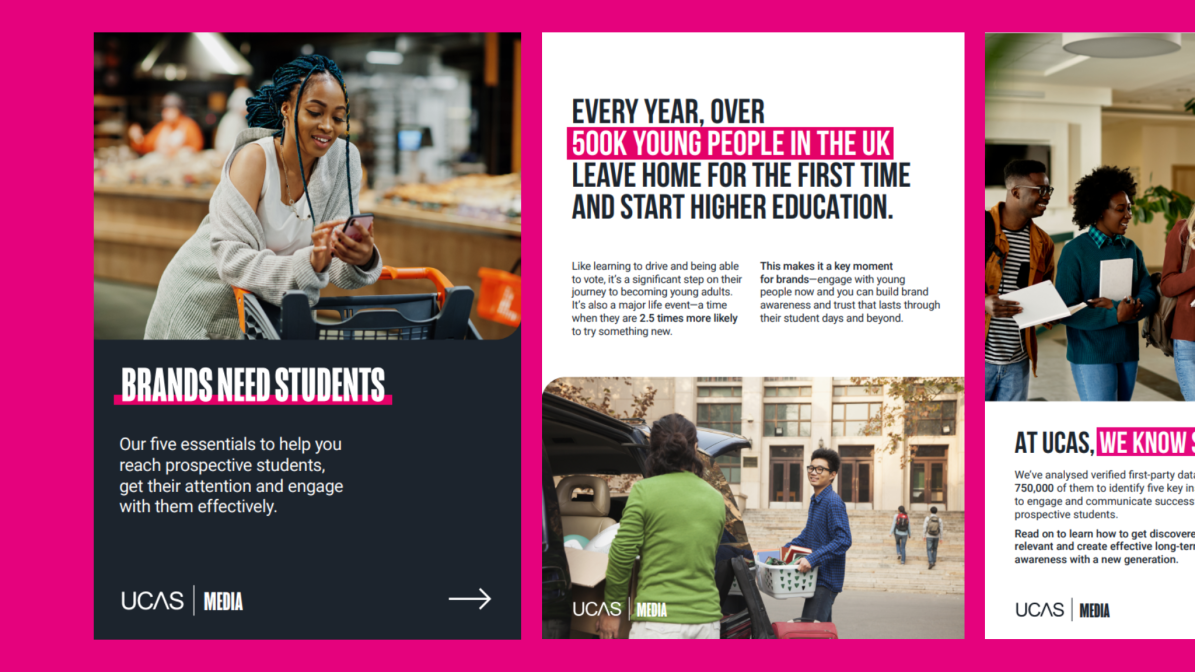Supporting over 1M verified new students every year
UCAS plays a unique role in supporting young people as they make decisions on their future – we are their trusted guide in a complex world.
To support them, we’ve engineered a unique media ecosystem, comprising of multiple channels to offer advice and guidance at all the points our audience need it the most – both on and offline.
Ready to engage the next generation with UCAS?
Get in touch


